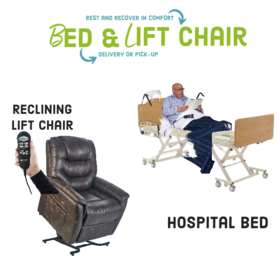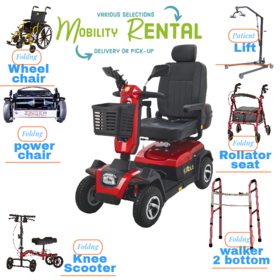Blog What did manual wheelchairs Look Like In The 1920s?
Tue, 11/15/2022 - 15:14

Wheelchairs and Power Wheelchairs used in the early 1920's may not be that different from the wheelchairs that we find today. Wheelchairs are one of the most popular mobility aids because they are lightweight and easy to store. Some wheelchairs are self-propelled, while others are pushed along in transit wheelchairs (called transit chairs).
Getting out and exploring the world is easier for those with limited or no mobility with a wheelchair. It is possible to take a wheelchair on a train, plane, bus, or car because of its lightweight qualities.
A wheelchair's popularity led us to wonder about the history of one of the most powerful inventions in the history of mobility.
The first wheelchairs appeared in the 1700s, and the folding style was not invented until the early 1930s. Before chairs became folding, they were solid one-piece constructions with wheels.
The chairs lacked easy-to-use features like foldable frames, collapsible seats, or backs. Instead, they consisted of wood laid across a framework. Often, a caretaker would place handles on the rear to aid mobility.
But when did Power Wheelchairs become a reality? It was around 1920.

Farfler's Self-propelled is the way forward.
In 1912, Stephan Farfler, a German paraplegic watchmaker, invented the first self-propelling wheelchair. Designed with a three-wheel chassis and hand cranks on the front wheel, the chair was only 22 years old.
In the following 250 years, a few improvements were made to the young inventor's design. A green-back chair made sometime between 1910-1920 is now at the Science Museum in London. This model still has the 'hand cranks' on the front, similar to Farfler's.
Wheelchairs were probably used as early as the sixth century AD, based on stone inscriptions in Ancient China and Greece.
King Philip of Spain (1527-98), who suffered from severe gout in his later years, received one of the best-documented early examples in 1595, made by an unknown inventor.
A servant had to push this chair because it had plush upholstery, armrests, and small wheels, which meant it was (conveniently) necessary to move him around.
Inventor Stephan Farfler (1633-1689), a paraplegic clockmaker of Nuremberg, Germany, built the first self-propelled wheelchair when he was 22 after sustaining a back injury as a child.
With his clock-making expertise, Fafler built a wheelchair frame based on a three-wheel chassis and operated it using cranks and cogwheels connected to a geared front wheel.
The bicycle wouldn't have been invented hundreds of years after this wheelchair, but it is easy to see it as its forerunner.
The bath chair
Victorian Bath Chairs were invented in 1750 by James Health in the Bath town of the same name. Using wicker, these chairs were lightweight and comfortable, just like the ones we have today.
A small 'pivoting wheel' is in front to support two wheels joined by an axel beneath the seat. A long rod can push it from behind by steering the front wheel.
The Bath Chair was primarily used outside and for transporting wealthy patients in and out of the Roman Baths. Their usefulness made them popular for transporting injured soldiers during the American Civil War.
Undoubtedly, the 'X frame' folding wheelchair was one of history's most influential wheelchair concepts. Harry Jennings and Herbert Everest developed this technology in the 1930s.
Eventually, this led to the 1950s Model 8 folding wheelchair. Throughout hospitals, nursing homes, and private institutions, Model 8 was widely used. This wheelchair was maneuverable or pushable by a patient or assistant because it had metal rims on each wheel.
That's it. In this article, we'll look at the key moments in the history of the wheelchair.
Considering the concept behind today's wheelchair, it's not too far from the originals mentioned here. The advancement of technology has made wheelchairs lighter and easier to operate, thanks to new materials.
This can be seen in the Karma Ergo Lite, which has a lightweight X-frame and adjustable armrests & footrests, as well as a comfortable seat. The 'x-frame' design principle has remained virtually unchanged since the 1930s.
Manual wheelchair technology has advanced dramatically since the 1930s, with materials like aluminum and titanium making devices much lighter than older steel designs and models designed specifically for athletic performance.
Sports wheelchairs like the 'Shadow Racer' originated from an injured Vietnam veteran, Jim Martinson. With the development of sports wheelchairs manufactured by the company Quickie Designs, along with tennis and basketball chairs during the early 1990s, personal ambition played a pivotal role in advancing technology.
People with disabilities commonly use wheelchairs to enhance their mobility today. According to the World Health Organisation, it opens up a world of independence for people with limited mobility and allows them to engage in social, economic, and cultural activities.
On International Wheelchair Day, we celebrate the innovations in technology that have transformed the lives of millions. Still, we must also acknowledge that wheelchairs were only available for the privileged few during history – as they are today in most developing countries.
Future of wheelchairs
Modern wheelchairs are aesthetically pleasing and functionally complex. Artificial intelligence, robotics, and new technology will influence future designs. Inventors are working on a device that will allow people to control their wheelchairs with their minds in the wheelchair's development.
According to Mary Bellis, the design concept is as follows:
The invention by John Donoghue and Braingate aims at providing wheelchair assistance to patients with very limited mobility who otherwise would have difficulties using a wheelchair on their own.
In BrainGate, a device plugs into a patient's brain that connects to a computer, allowing them to send mental commands that control any device, including wheelchairs. It is called the brain-computer interface or BCI."
PAPAW (push rim activated power-assisted wheelchair) is another modern design. The Britannica website explains:
PAPAW's technology was a hybrid of electric and manual wheelchairs that utilized motors to supplement power applied by users to the push-rims during propelling or braking."
Our showrooms no longer carry wheelchairs similar to those described in this article. Check out our medical supply store or visit our website for our huge selection.
Tags
- contest
- event
- supplies
- design
- brand
- video
- Compression
- upright walker
- four wheel walker
- rollator
- wheelchair
- Ostomy
- elegantly
- elegantly
- accessibility
- Mobility
- knee walker rental
- knee scooter sales
- knee scooter
- post operative shoe
- anti-embolic stockings
- pain management
- cryotherapy therapy
- hot cold compress
- compression stockings
- lift chair
- wound Care
- air purifier
- fall prevention
- cushion
- oxygen therapy
- cpap, bipap
- Hospital Bed
- Life Aide
- EMS
- recovery
- splint
- knee brace
- Bathroom
- patient lift
- medical supply
- Wound dressings
- Lightweight Wheelchair
- hospital beds for sale
- sky medical supplies rentals
- compression socks
- Tegaderm Dressing
- Adult Diapers
- Rollator Walker
- Bed Wedge Pillow
- Hospital beds
- Patient Lifts and Slings
- Portable Oxygen Concentrator
- Patient Lift Slings
- knee scooter rental
- folding mobility scooter
- mobility scooter
- medical shoes
- raised toilet seat
- hospital beds for rent
- lift chair recliner
- chair lift
- electric wheelchair
- Power Lift Recliners for Elderly
- Senior Walkers
- Bedside Commodes
- whill wheelchair
- compression hose
- Whill Electric Wheelchairs
- Bariatric Wheelchair
- Recliner Chairs with Lift
- Colostomy Bag
- Crutches
- Medical Wedge Pillow
- skin barrier tape
- Post Surgery Ice Machine
- Bedside Commode
- chair lift recliners
- cane holder scooter
- lift chair prices
- drop arm commode
- rollator walker with ergonomic seats
- Hospital Bed Rental
- Wheelchair Tray
- Golden Technologies Lift Chair
- Nova GetGo Junior Rollator
- power lift recliners
- Knee Scooters and Crutches:
- stand up walker for seniors
- stand up walker as seen on TV
- Women's Walking Canes
- Knee Immobilizers
- Bed Wedge Pillow
- Medical Supply Stores
- Sit to Stand Lifts
- Grab Bars
- Compression Gloves
- incontinence bed pads
- Lift Reclining Chair
- Knee Walker Scooters
- Hernia Belt Near You
- Mobility Scooter Stores Near Me
- Folding Knee Walker
- Oxygen Concentrator Store
- Inogen Battery
- Electric Bed Frames
Related Posts
Get weekly articles in your inbox on the latest medical supply news, exclusive deals, and helpful health tips.
Sat, 11/26/2022 - 17:09
Six Advantages Of Motorized Wheelchair Over Regular Wheelchairs
A wheelchair's performance, style, and special features play an important role in deciding between a manual and a power wheelchair.
Thu, 12/01/2022 - 18:46
How Are Manual Wheelchairs Displayed in Medical Supply Stores
Wheelchairs are the most popular mobility aid that facilitates moving around easily.






